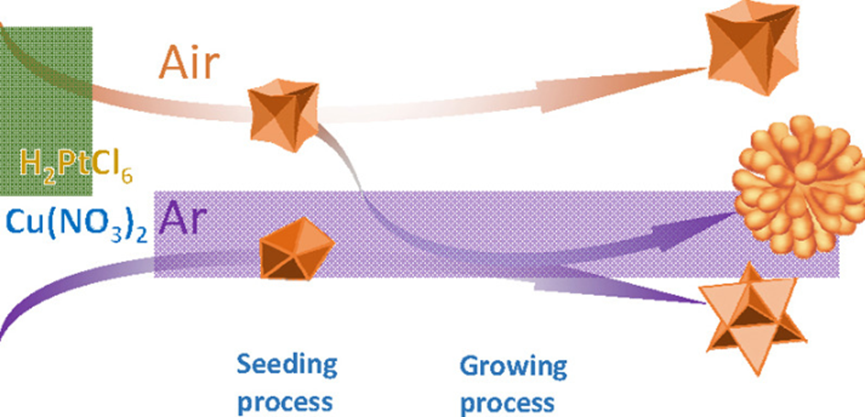Alloying and nanostructuring are two strategies used to facilitate the efficient electrocatalysis of the oxygen reduction reaction (ORR) by Pt, where the high index surfaces (HISs) of Pt exhibit superior activity for ORR. Here, we report the fabrication of PtCu3 nanodendrites possessing rich spiny branches exposing n(111) × (110) HISs. The dendrites were formed through an etching-modulated seeding and growing strategy. Specifically, an oxidative atmosphere was initially applied to form the concaved nanocubes of the Pt-Cu seeds, which was then switched to an inert atmosphere to promote an explosive growth of dendrites. Separately, the oxidative or inert atmosphere failed to produce this hyperbranched structure. Electrochemical dealloying of the PtCu3 nanodendrites produced Pt3Cu shells with Pt-rich surfaces where HIS-exposed dendrite structures were maintained. The resulting PtCu3@Pt3Cu@Pt nanodendrites in 0.1 M HClO4 exhibited excellent mass and area specific activities for ORR, which were 14 and 24 times higher than that of commercial Pt/C, respectively. DFT calculations revealed that Cu alloying and HISs both contributed to the significantly enhanced activity of Pt, and that the oxygen binding energy on the step sites of HISs on the PtCu3@Pt3Cu@Pt nanodendrites approached the optimal value to achieve a near peak-top ORR activity.
https://doi.org/10.1016/S1872-2067(20)63735-4